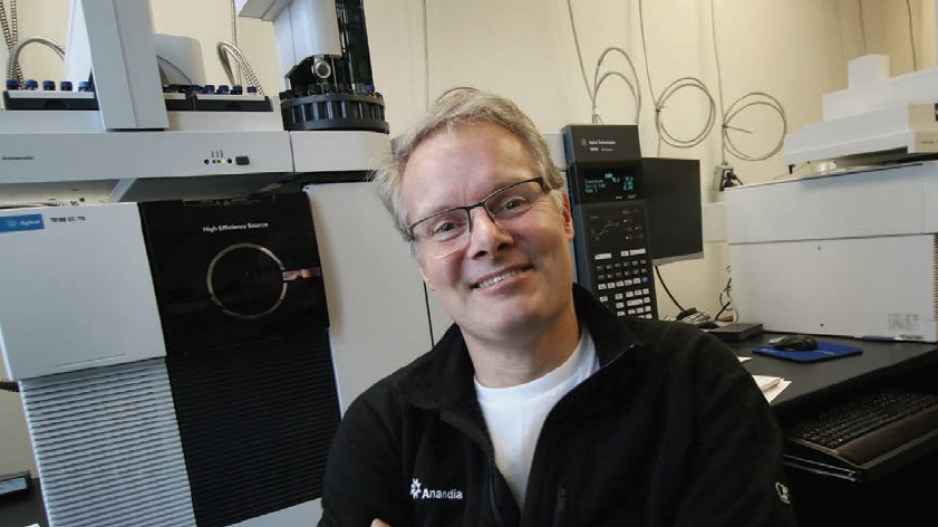The legalization of cannabis has sparked a trend where lab-testing companies are increasingly in demand, and sought as acquisition targets by large licensed producers (LPs).
Cannabis now falls under Health Canada regulations, like any other consumable product. That means more business for lab-testing companies because growers, and producers of capsules, oils and other cannabis-based products, must have their products tested by licensed labs to determine potency and the presence of heavy metals, pesticides, yeast and mould.
A couple of dozen independent labs across Canada are licensed to test cannabis products. But there has been a trend lately where bigger players in the medical marijuana industry are not content to merely contract out their testing and research. They have been acquiring testing and research labs to bring that expertise in-house.
Last year, for example, Edmonton-based Aurora Cannabis Inc. (TSX:ACB), the world’s second-largest medical marijuana company, bought Vancouver’s Anandia Labs for $115 million.
Another 2018 transaction saw Victoria-based Emerald Health Therapeutics (TSX-V:EMH) buy Langley’s Northern Vine Labs from Abattis Bioceuticals Corp. (CSE:ATT).
A third was Canada’s largest medical marijuana company, Canopy Growth Corp. (TSX:WEED), completing its acquisition of its research affiliate, Canopy Health Innovations Inc., which, like Anandia, is a lab specializing in cannabis testing and research.
These large LPs are seeing a competitive advantage in having their own in-house research and development divisions.
“By buying them up, you gain two things,” said Jonathan Page, who co-founded Anandia Labs and is now the chief science officer for Aurora.
“One is that you have a lot more flexibility – the nimbleness – to direct research and seize opportunities, research-wise, in-house, compared to contracting it out.”
He added that a second advantage is that the LP is able to exclude competitors from using its lab for research.
“You own the program,” he said. “It’s yours, and your competitors are not going to be able to access that.”
In many sectors – biotech, energy, forestry and agriculture, for example – universities have often done the groundbreaking research that leads to innovation. That has not been the case with cannabis.
The University of British Columbia’s botany department, where Page is an adjunct professor, was one of the few academic labs in Canada doing research on cannabis genetics. So by the time Page and John Coleman – former head of project research for the Centre for Drug Research and Development – had co-founded Anandia, they had already done a lot of valuable cannabis-related science, making it an attractive acquisition for Aurora.
“Certainly some of the larger players have identified that there’s a science gap in the cannabis industry, and it’s really been created by 80-odd years of prohibition,” said Coleman, now Anandia’s president. “Canopy Growth is a good example. They’re building in-house expertise around their science team and testing team.”
Although Aurora now owns Anandia, the two companies operate independently of each other. Anadia continues to offer testing services for other licensed growers and manufacturers. In fact, only 35% to 40% of the testing Anandia does is for Aurora. The rest is done on a contract basis for other growers.
But testing is only part of Anandia’s business. It’s the research that Anandia does where the real value lies for Aurora.
That research includes using genetics to develop strains that are naturally resistant to certain diseases or pests that might reduce crop yield.
“Let’s face it, big companies, whether you’re Tesla [Nasdaq:TSLA] or Toyota [NYSE:TM] or even a brewing company, will have very large innovation centres that drive their products, and that’s where cannabis is going to,” Page said.
Another recent example of licensed producers investing in the science of cannabis is the recent $10 million stake that OrganiGram Holdings Inc. (TSX-V:OGI) took in Montreal-based biopharma company Hyasynth Bio.
Hyasynth Bio has developed a process for producing cannabinoids, such as THC and CBD, from yeast.
Kevin Chen, Hyasynth’s founder and CEO, said the obvious benefit of producing cannabinoids from yeast is that large quantities of specific compounds can be produced much cheaper, because it would require less land and energy than first growing marijuana plants, from which the compounds would then be extracted.
Recent clinical work has shown that the cannabinoids CBDV and THCV, respectively, may be effective in treating epilepsy and diabetes.
“That’s where we have a unique edge,” Chen said. “Since we are working with these specific enzymes, we can choose which products we want to make.” •




